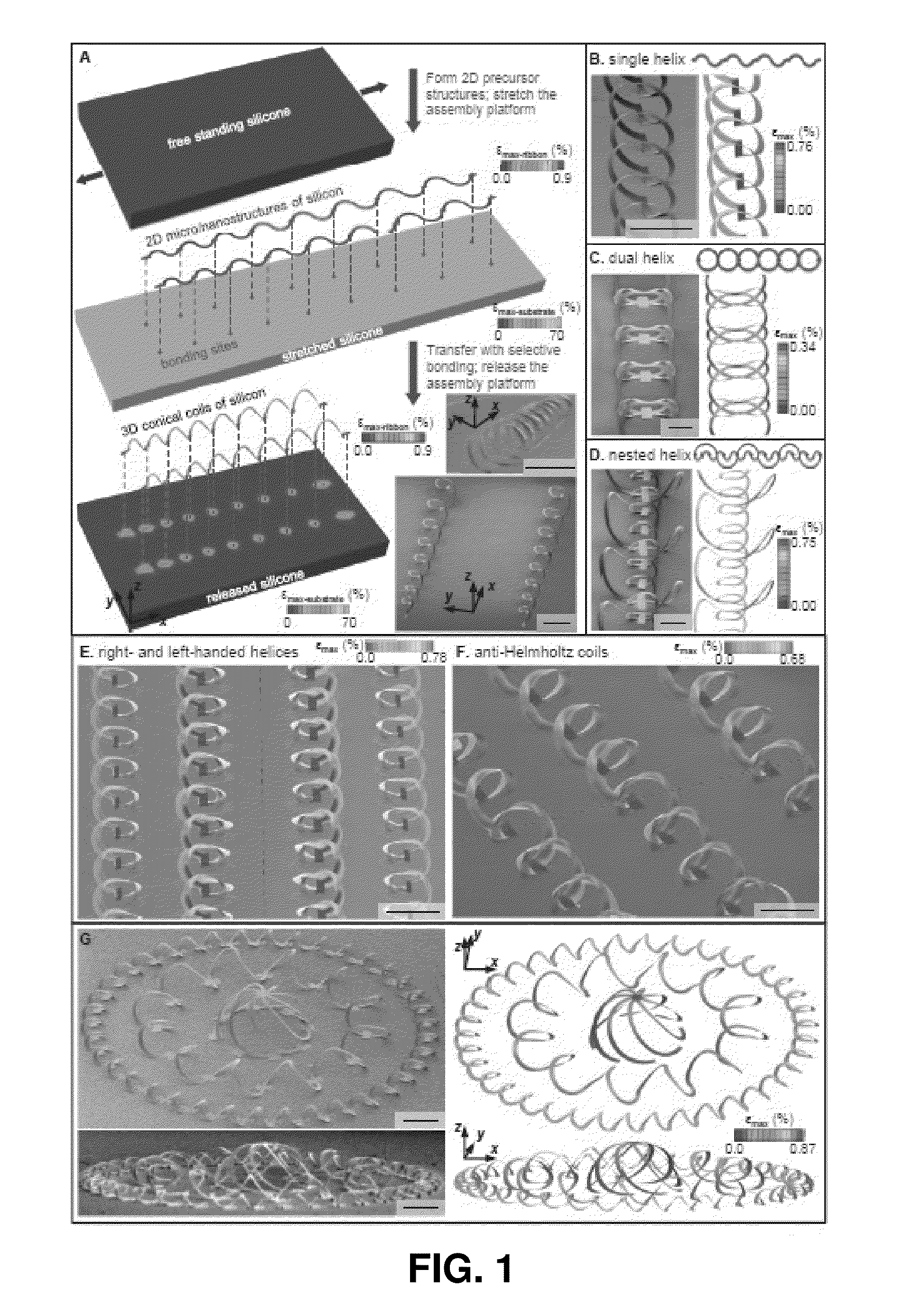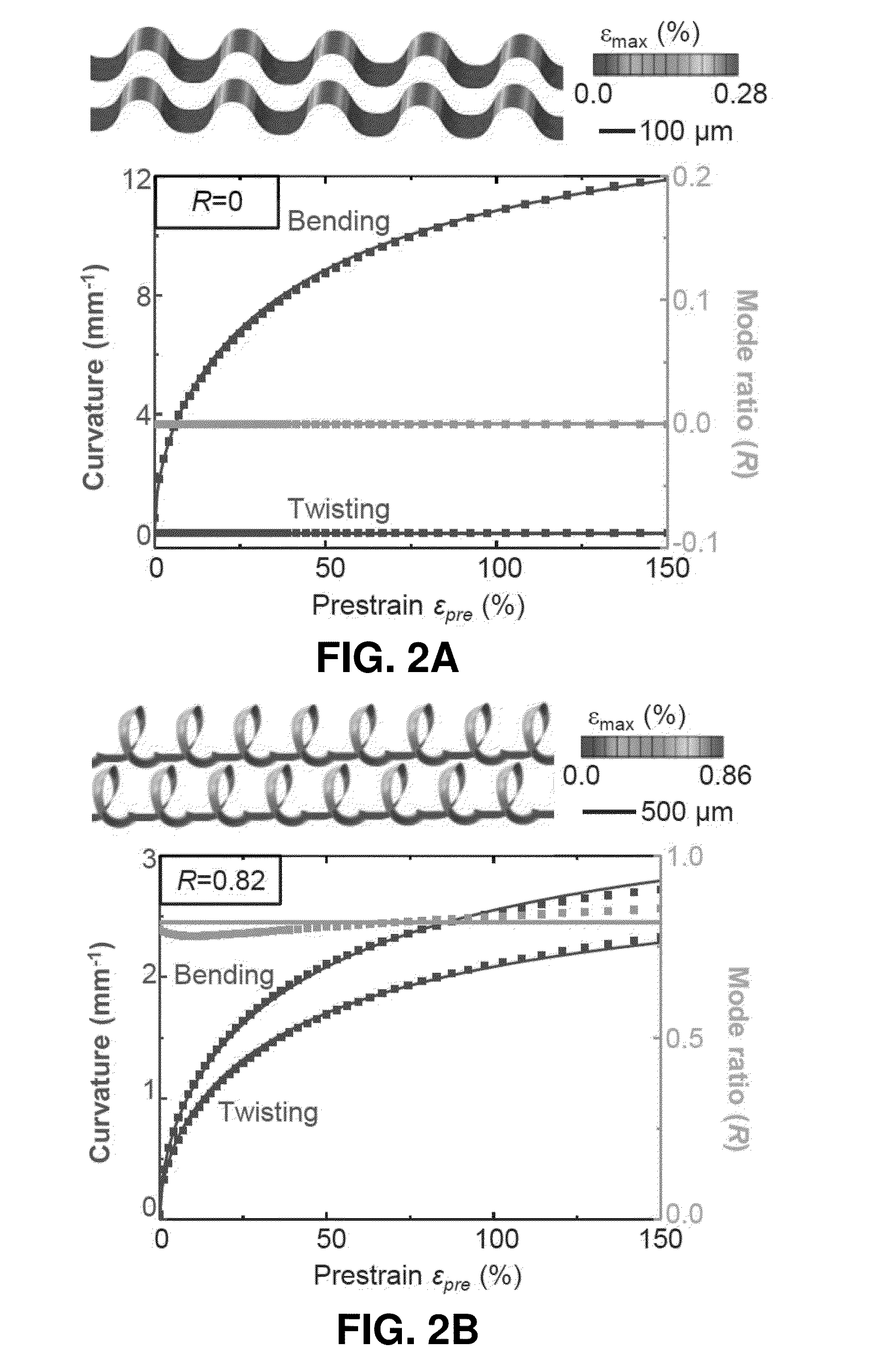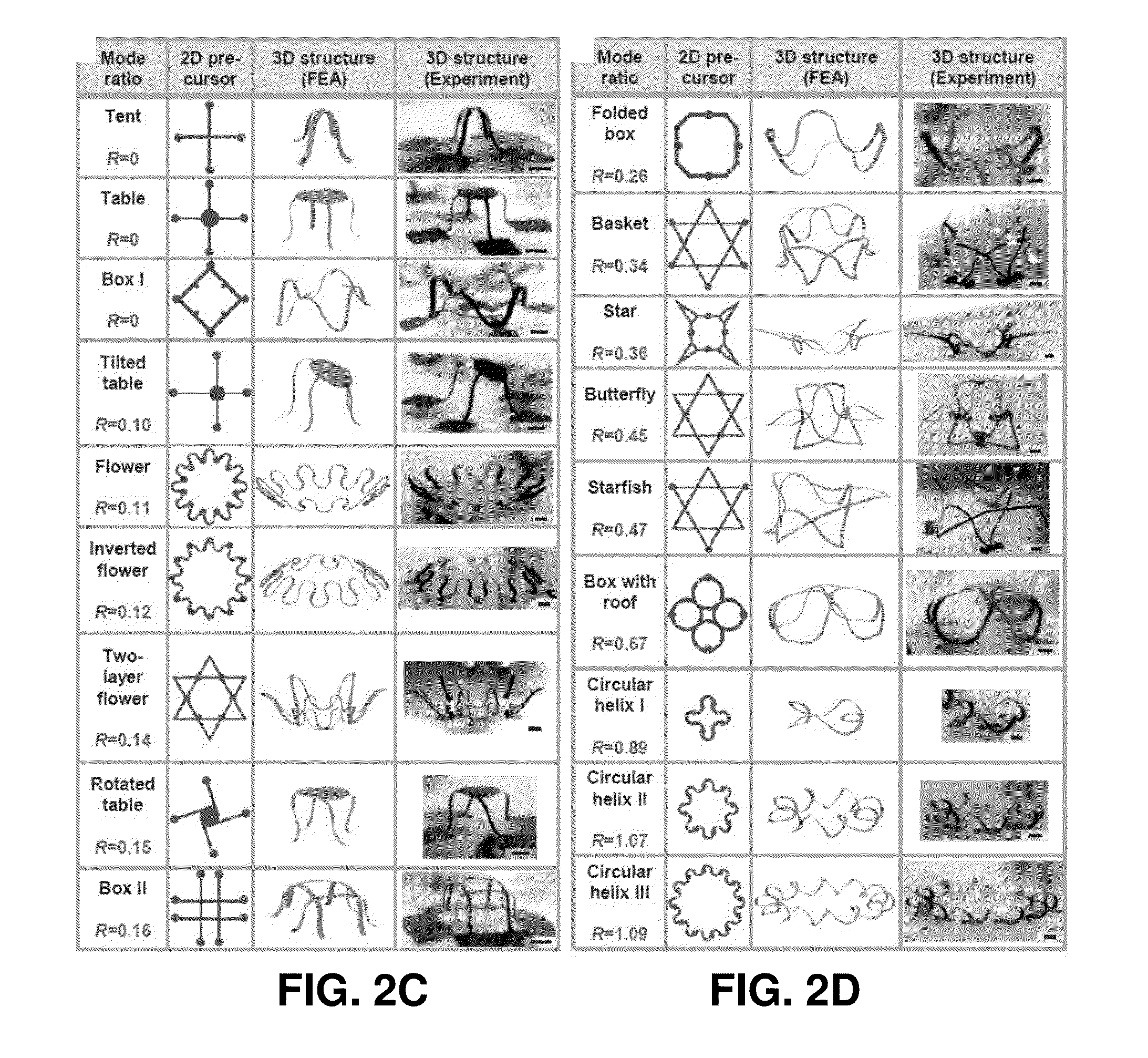Deterministic assembly of complex, three-dimensional architectures by compressive buckling
a three-dimensional architecture and deterministic assembly technology, applied in the field of deterministic assembly of complex three-dimensional architectures by compressive buckling, can solve the problems of difficult integration of more than one type of any material into a single structure, and the nature of these processes sets practical constraints on operating speed and overall addressable areas
- Summary
- Abstract
- Description
- Claims
- Application Information
AI Technical Summary
Benefits of technology
Problems solved by technology
Method used
Image
Examples
example 1
Deterministic Assembly of Functional Micro / Nanomaterials into Complex, Three-Dimensional Architectures by Compressive Buckling
[0196]Complex, three dimensional (3D) assemblies of nanomaterials form naturally in all biological systems, where they provide essential functions in even the most basic forms of life. Compelling opportunities exist for analogous 3D structures in man-made devices, but design options are constrained by comparatively primitive capabilities in materials growth and assembly. Here we report simple, rapid routes to previously inaccessible classes of 3D architectures in advanced materials, with characteristic dimensions that range from nanometers to centimeters and areas that span square centimeters or more. The approach relies on geometric transformation of two dimensional (2D) micro / nanostructures into extended 3D layouts by controlled processes of substrate-induced compressive buckling. Demonstrations include combined experimental and theoretical studies of more ...
example 2
A Mechanically Driven Form of Kirigami as a Route to 3D Mesostructures in Micro / Nanomembranes
[0269]Abstract
[0270]Assembly of three-dimensional (3D) micro / nanostructures in advanced functional materials has important implications across broad areas of technology. Existing approaches are compatible, however, only with narrow classes of materials and / or 3D geometries. This example introduces ideas for a form of Kirigami that allows precise, mechanically driven assembly of 3D mesostructures of diverse materials from 2D micro / nanomembranes with strategically designed geometries and patterns of cuts. Theoretical and experimental studies demonstrate applicability of the methods across length scales from macro to nano, in materials ranging from monocrystalline silicon to plastic, with levels of topographical complexity that significantly exceed those that can be achieved in any other way. A broad set of examples includes 3D silicon mesostructures and hybrid nanomembrane-nanoribbon systems, ...
example 3
Origami of Micro / Nanomaterials Through Controlled Buckling
[0348]In this example, mechanical buckling schemes for autonomic origami-inspired assembly are presented in comprehensive theoretical and experimental studies, with examples in 3D architectures with a broad range of topologies and material compositions, including high-performance semiconductor nanomaterials. The resulting engineering options in the construction of functional 3D mesostructures have important implications for advanced microsystem technologies.
[0349]Origami, the ancient Japanese art of paper folding, involves the transformation of planar paper sheets into macroscopic three-dimensional (3D) sculptures with diverse topologies.[1] Origami is now a topic of rapidly growing interest in the scientific and engineering research communities, due to its potential or use in a broad range of applications, from self-folding microelectronics,[2-4] deformable batteries,[5, 6] and reconfigurable metamaterials,[7] to artificial ...
PUM
| Property | Measurement | Unit |
|---|---|---|
| thickness | aaaaa | aaaaa |
| thickness | aaaaa | aaaaa |
| thickness | aaaaa | aaaaa |
Abstract
Description
Claims
Application Information
 Login to View More
Login to View More - R&D
- Intellectual Property
- Life Sciences
- Materials
- Tech Scout
- Unparalleled Data Quality
- Higher Quality Content
- 60% Fewer Hallucinations
Browse by: Latest US Patents, China's latest patents, Technical Efficacy Thesaurus, Application Domain, Technology Topic, Popular Technical Reports.
© 2025 PatSnap. All rights reserved.Legal|Privacy policy|Modern Slavery Act Transparency Statement|Sitemap|About US| Contact US: help@patsnap.com



